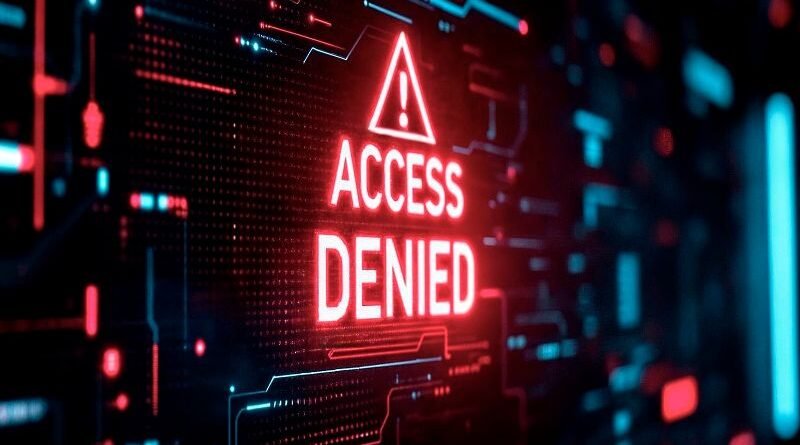ERR_SSL_PROTOCOL_ERROR: Causes, Fixes, and Prevention (2025 Guide)
Introduction
Have you ever tried visiting a website only to see the frustrating “ERR_SSL_PROTOCOL_ERROR” message? This SSL-related error can prevent you from accessing secure websites, leaving you confused and annoyed.
In this detailed guide, we’ll explain:
What ERR_SSL_PROTOCOL_ERROR means
Why it happens (common causes)
Step-by-step fixes for users & website owners
How to prevent it in the future
Whether you’re a regular internet user or a website administrator, this guide will help you resolve the issue quickly.
What is ERR_SSL_PROTOCOL_ERROR?
The ERR_SSL_PROTOCOL_ERROR is a browser error that appears when your browser (Chrome, Firefox, Edge, etc.) fails to establish a secure SSL/TLS connection with a website.
SSL (Secure Sockets Layer) and its successor TLS (Transport Layer Security) are encryption protocols that ensure safe data transfer between your browser and a website. When this connection fails, you see this error instead of the website.
Common Symptoms
- A blank page with “ERR_SSL_PROTOCOL_ERROR”
- A warning like “Your connection is not private”
- Inability to load secure (HTTPS) websites
Why Does ERR_SSL_PROTOCOL_ERROR Occur?
Several factors can trigger this error. Below are the most common causes:
1. Incorrect System Date & Time
SSL certificates rely on accurate system time. If your device’s date/time is wrong, the browser may reject the SSL handshake.
2. Browser Cache or Corrupted SSL Data
Cached SSL certificates or corrupted browser data can cause conflicts.
3. Outdated Browser or OS
Older browsers may not support modern SSL/TLS protocols.
4. Firewall or Antivirus Interference
Security software sometimes blocks SSL connections mistakenly.
5. Website-Side SSL Issues
- Expired SSL certificate
- Misconfigured server settings
- Mixed content (HTTP & HTTPS conflicts)
6. Network Issues
- Proxy/VPN blocking SSL
- ISP restrictions
How to Fix ERR_SSL_PROTOCOL_ERROR (Step-by-Step Guide)
Fix 1: Check Your System Date & Time
- Windows:
Right-click the clock > Adjust date/time > Enable “Set time automatically”.
- Mac:
Go to System Preferences > Date & Time > Check “Set date and time automatically”.
- Mobile (Android/iOS):
Go to Settings > Date & Time > Enable Automatic timezone.
Fix 2: Clear Browser Cache & SSL State
Google Chrome
- Open Chrome > Press Ctrl+Shift+Del (Windows) or Cmd+Shift+Del (Mac).
- Select “Cached images and files” and “Cookies and other site data”.
- Click “Clear data”.
Reset SSL State (Windows)
- Press Win + R, type inetcpl.cpl > Go to Content tab.
- Click “Clear SSL state” > Restart browser.
Fix 3: Disable Firewall/Antivirus Temporarily
- Windows Defender:
- Go to Settings > Update & Security > Windows Security > Firewall & network protection > Turn off temporarily.
- Third-party Antivirus:
- Open the antivirus app > Disable real-time protection for a few minutes.
Fix 4: Update Your Browser & OS
- Chrome: chrome://settings/help
- Firefox: Menu > Help > About Firefox
- Windows Update: Settings > Update & Security
Fix 5: Try a Different Browser or Device
If the error persists, test the website on:
- Another browser (Firefox, Edge, Brave)
- A different device (phone, tablet)
Fix 6: Disable VPN/Proxy
- Windows:
Settings > Network & Internet > Proxy > Turn off “Use a proxy server”.
- Mac:
System Preferences > Network > Advanced > Proxies > Uncheck proxy settings.
Fix 7: Check Website SSL Certificate (For Website Owners)
If you run a website and visitors see this error:
- Check SSL Validity: Use SSL Labs Test
- Renew Expired SSL: Contact your hosting provider.
- Fix Mixed Content: Ensure all resources (images, scripts) load via HTTPS.
How to Prevent ERR_SSL_PROTOCOL_ERROR in the Future
For Users:
Keep your browser & OS updated
Regularly clear SSL cache
Use a reliable antivirus without aggressive SSL scanning
For Website Owners:
Use a trusted SSL provider (Let’s Encrypt, DigiCert, Comodo)
Enable HTTPS redirects (force SSL via .htaccess or server settings)
Monitor SSL expiry (set up renewal reminders)
Conclusion
The ERR_SSL_PROTOCOL_ERROR can be frustrating, but it’s usually fixable with simple steps. Most cases are due to incorrect system time, browser cache, or SSL misconfigurations.
Quick Recap:
Check date & time settings
Clear browser cache & SSL state
Disable VPN/proxy/firewall temporarily
Update your browser & OS
Website owners: Verify SSL certificate & server settings
By following these steps, you should resolve the issue quickly. If the problem persists, contact your ISP or website administrator for further help.
Need More Help?
Drop a comment below, and we’ll assist you!
For more interesting articles; visit our website “Wpdevshed“
